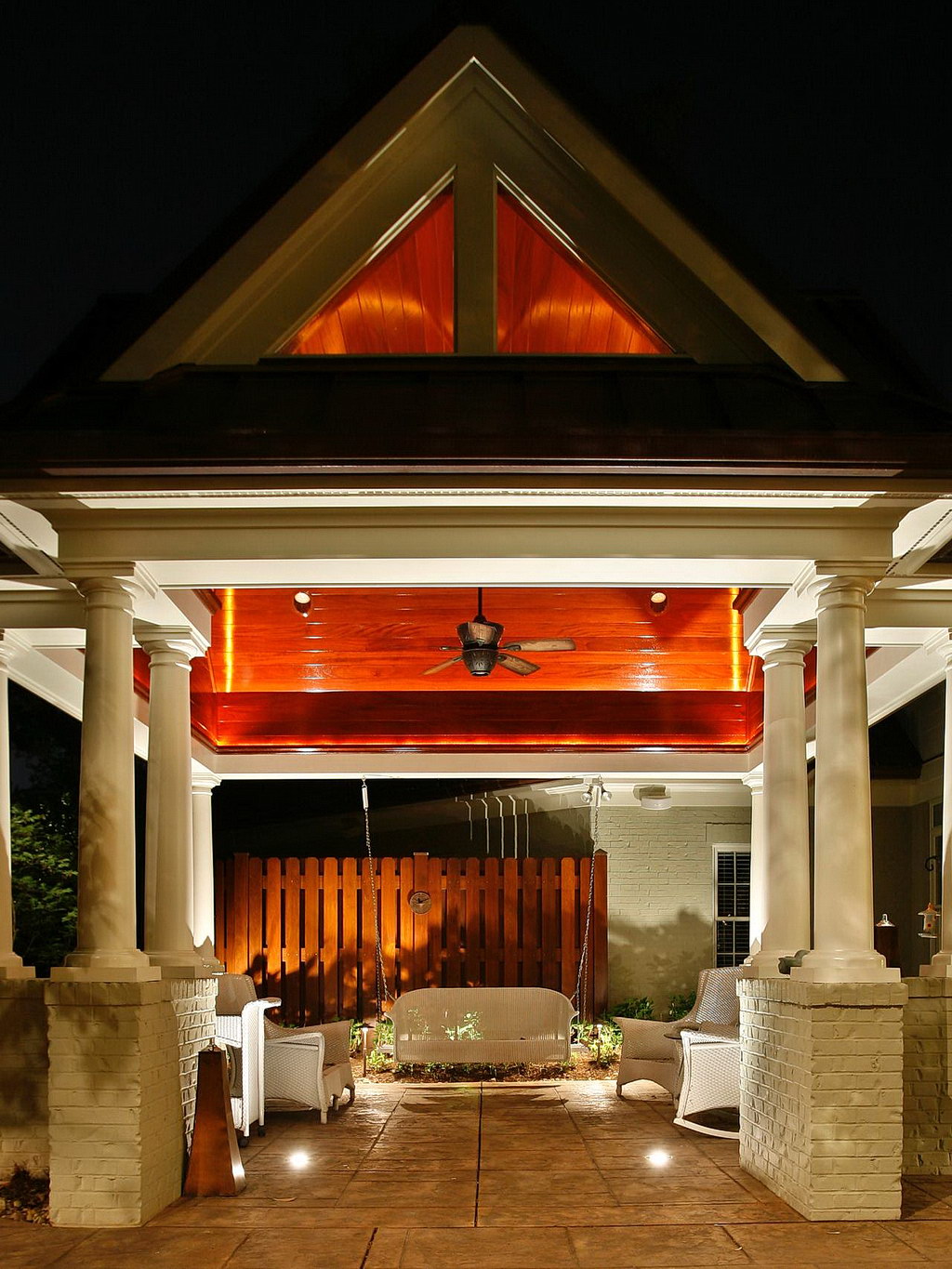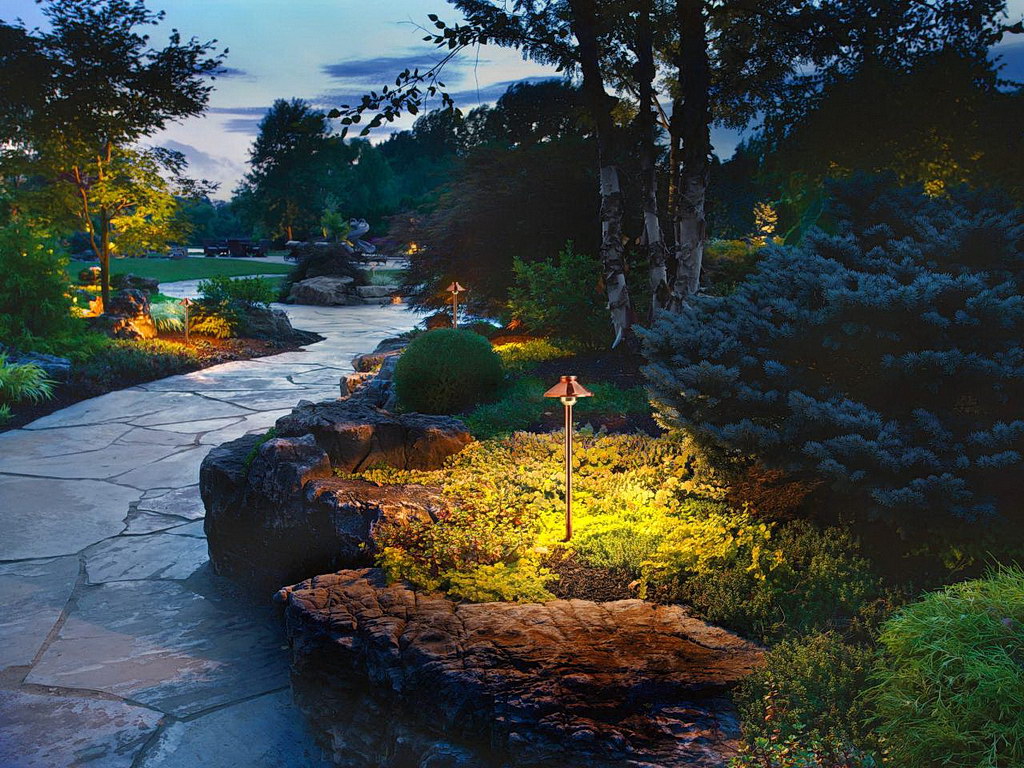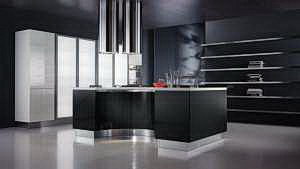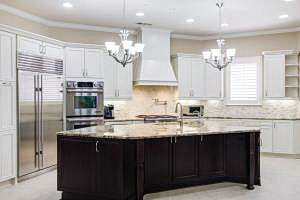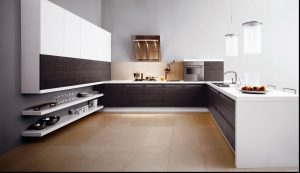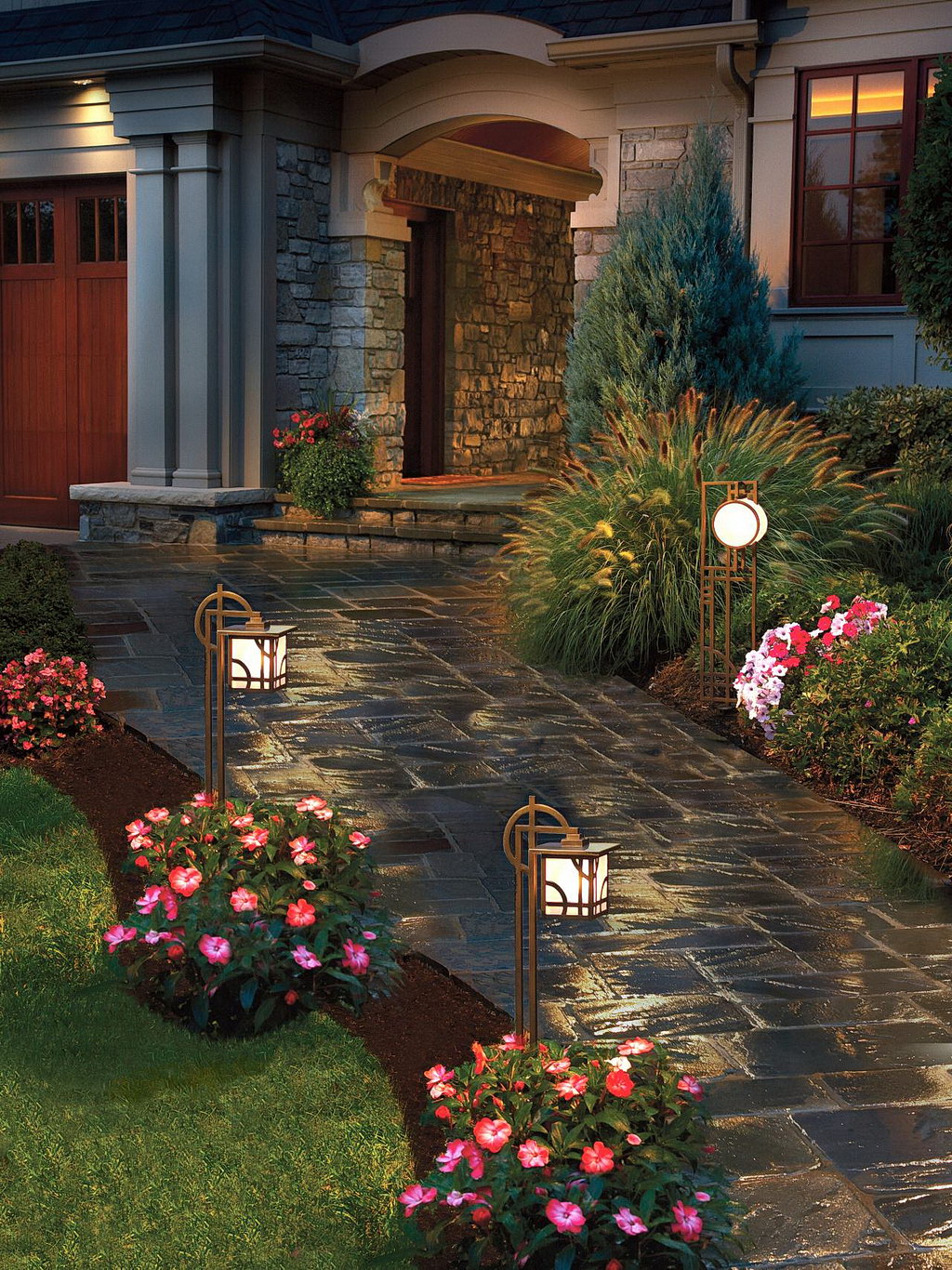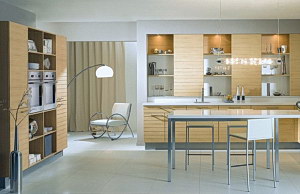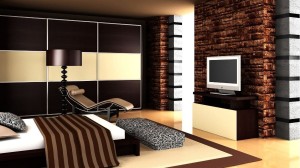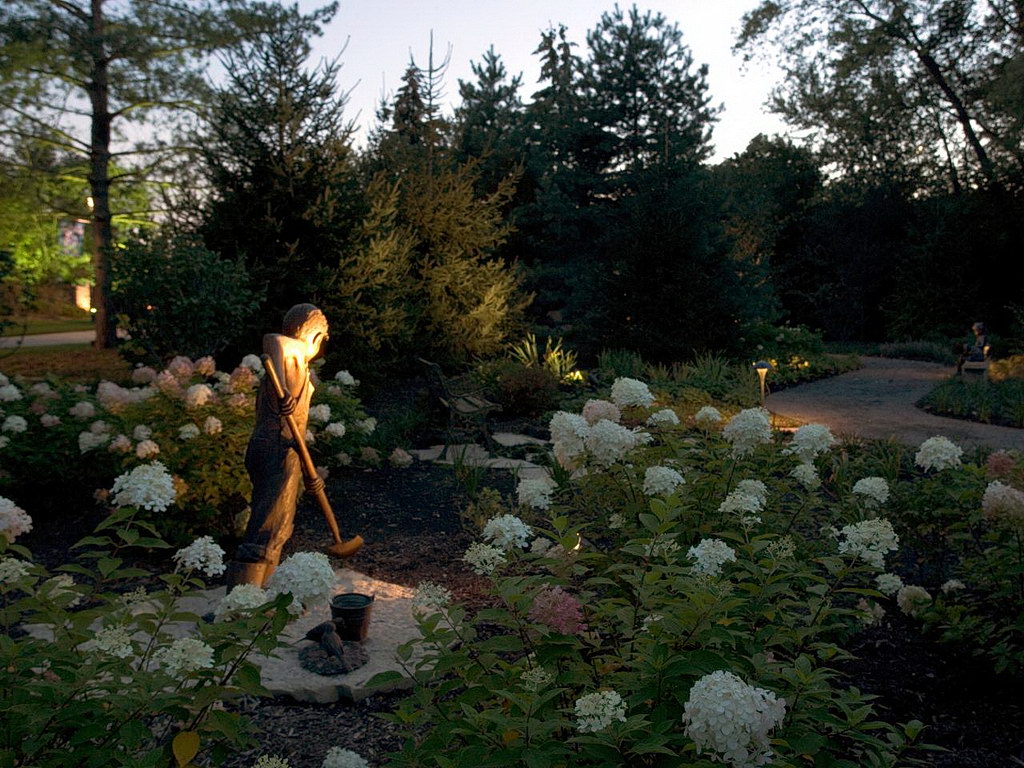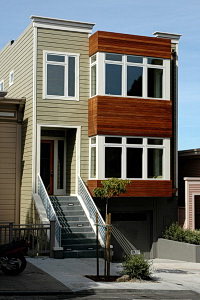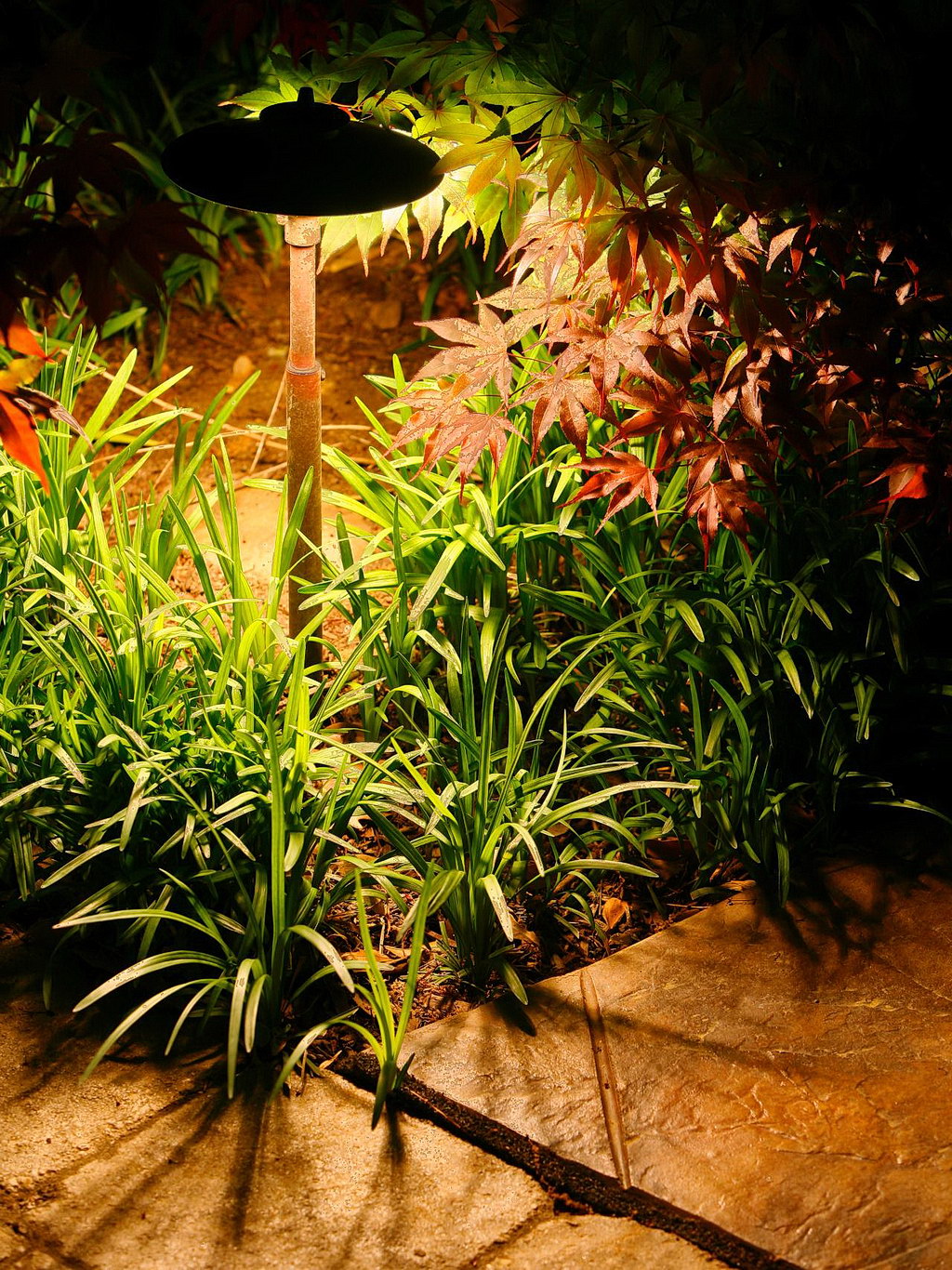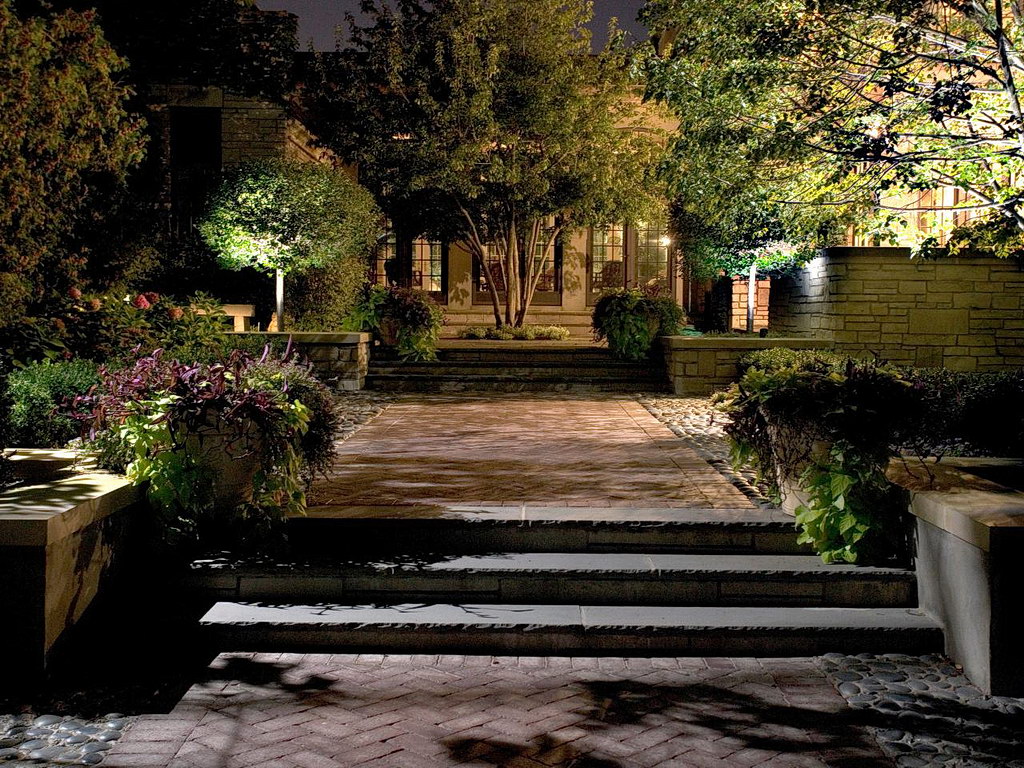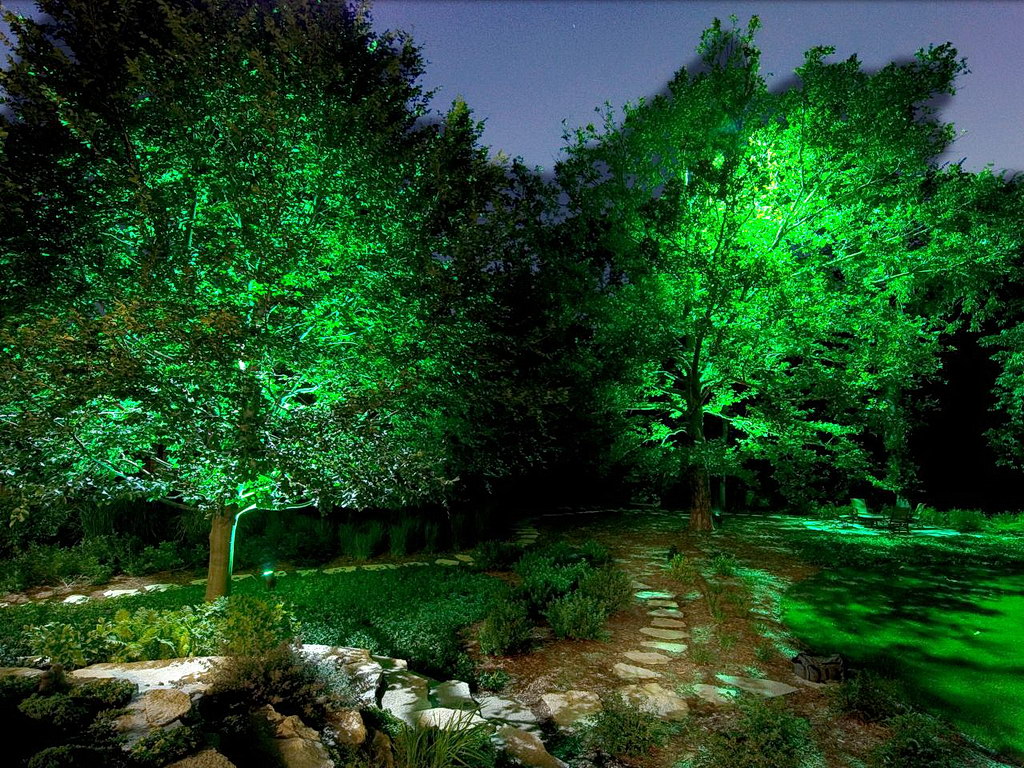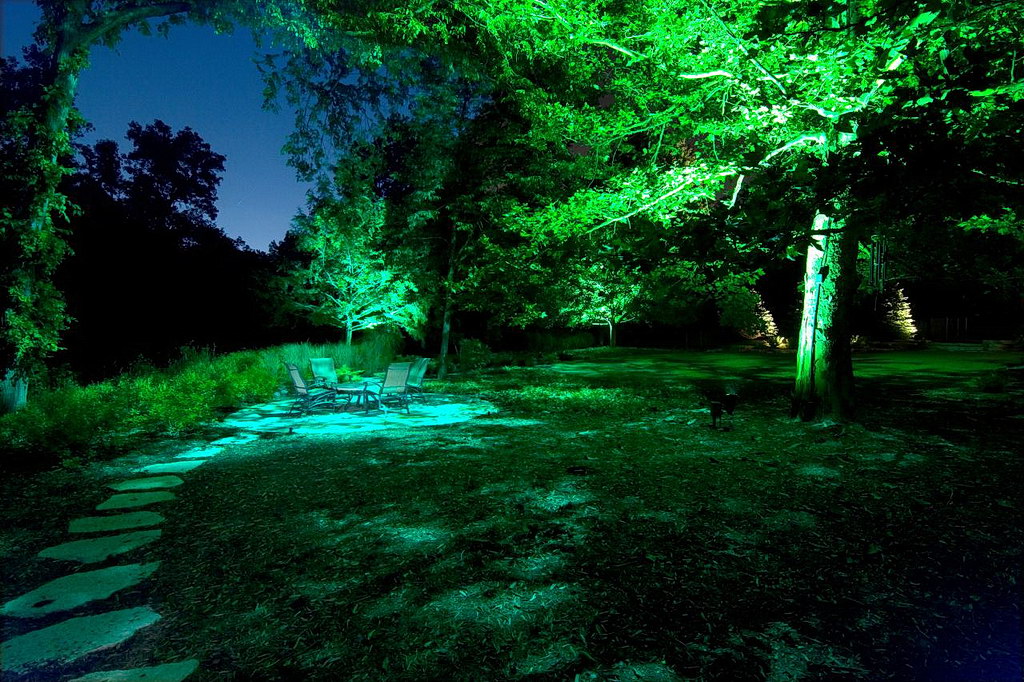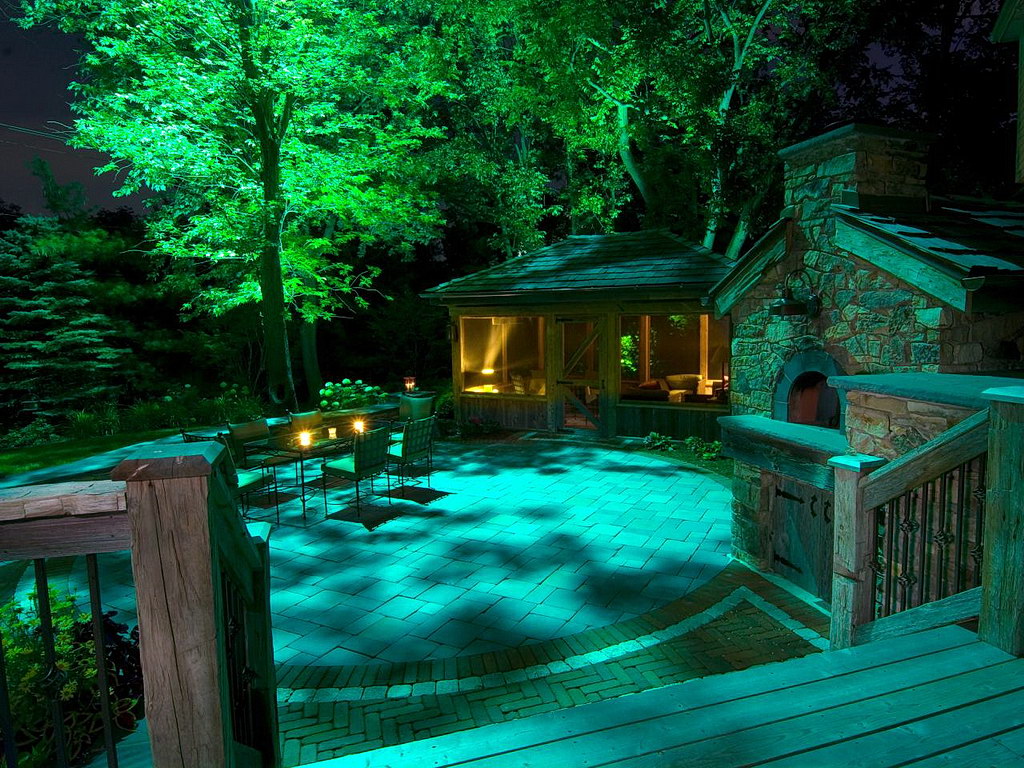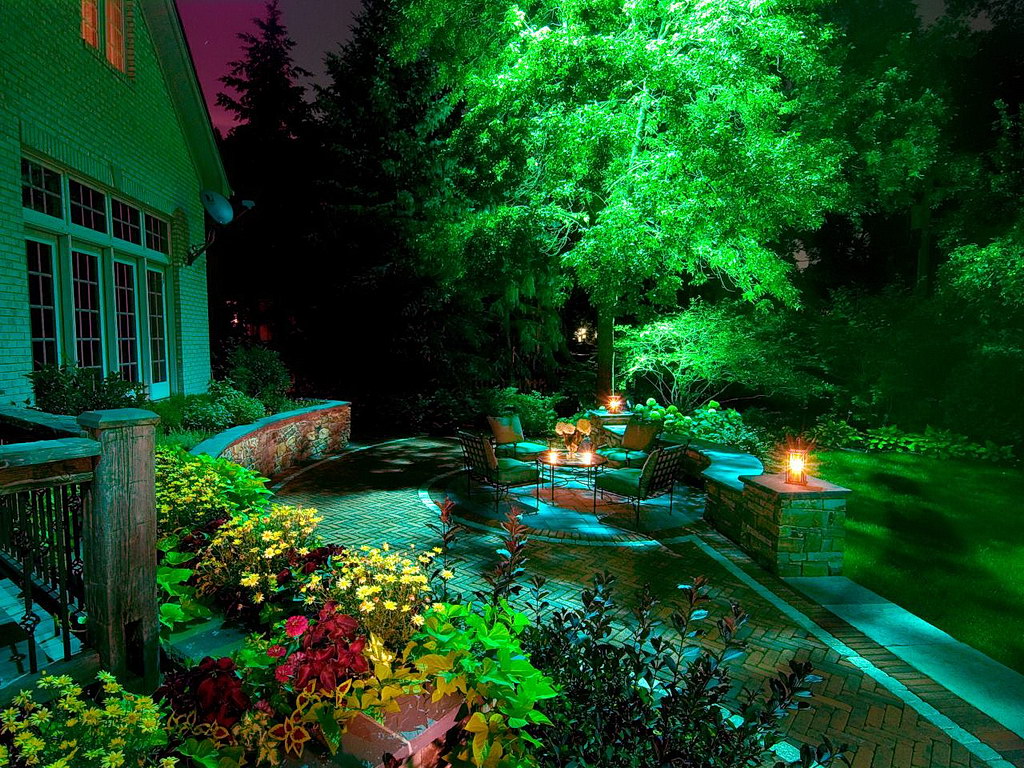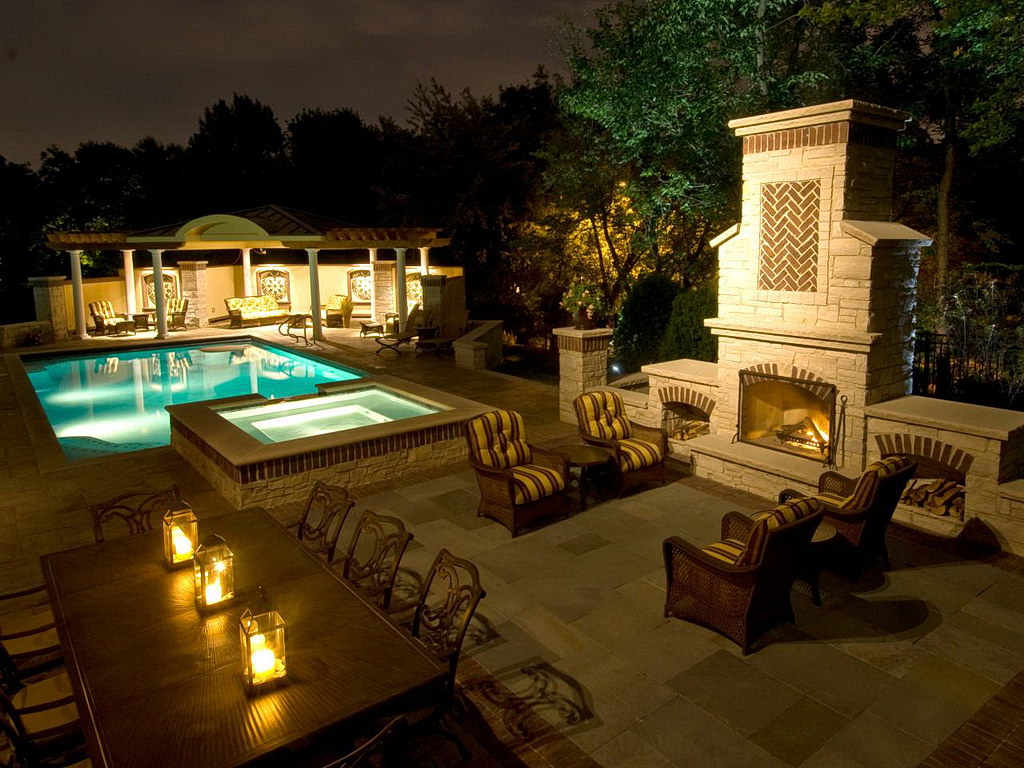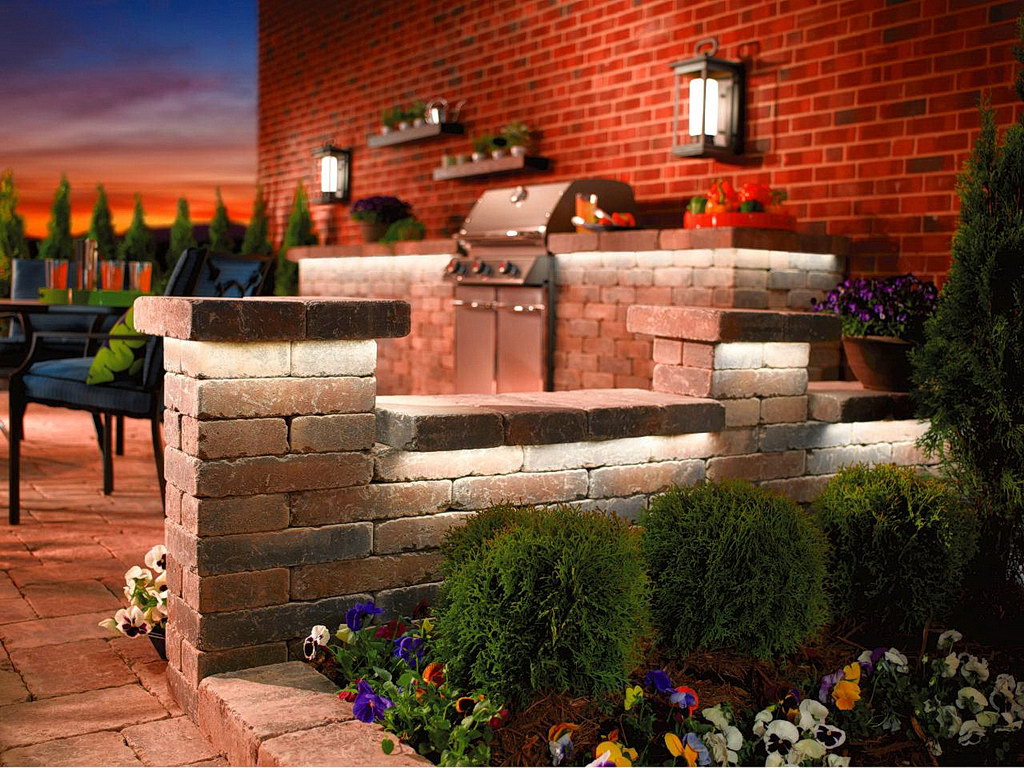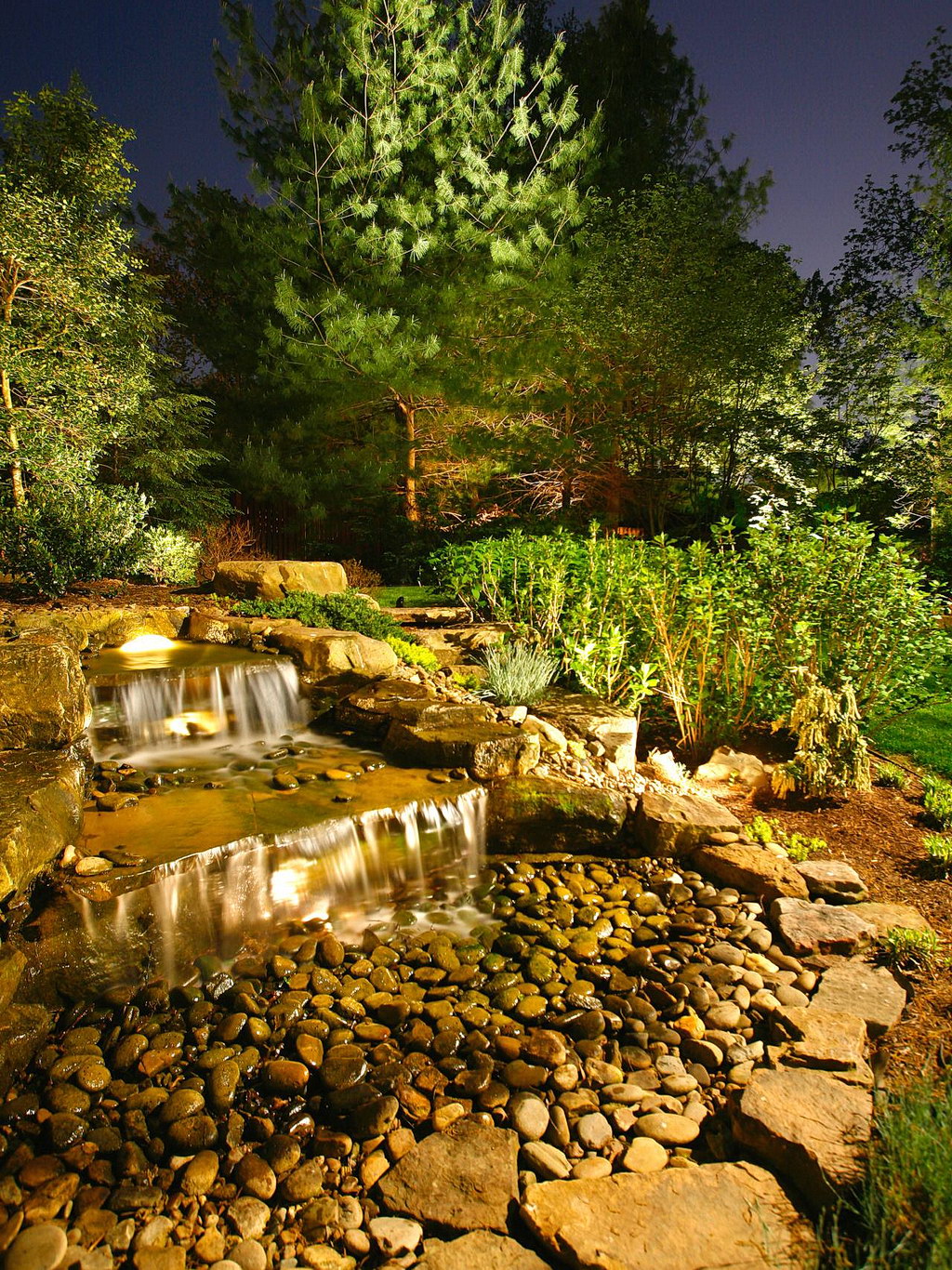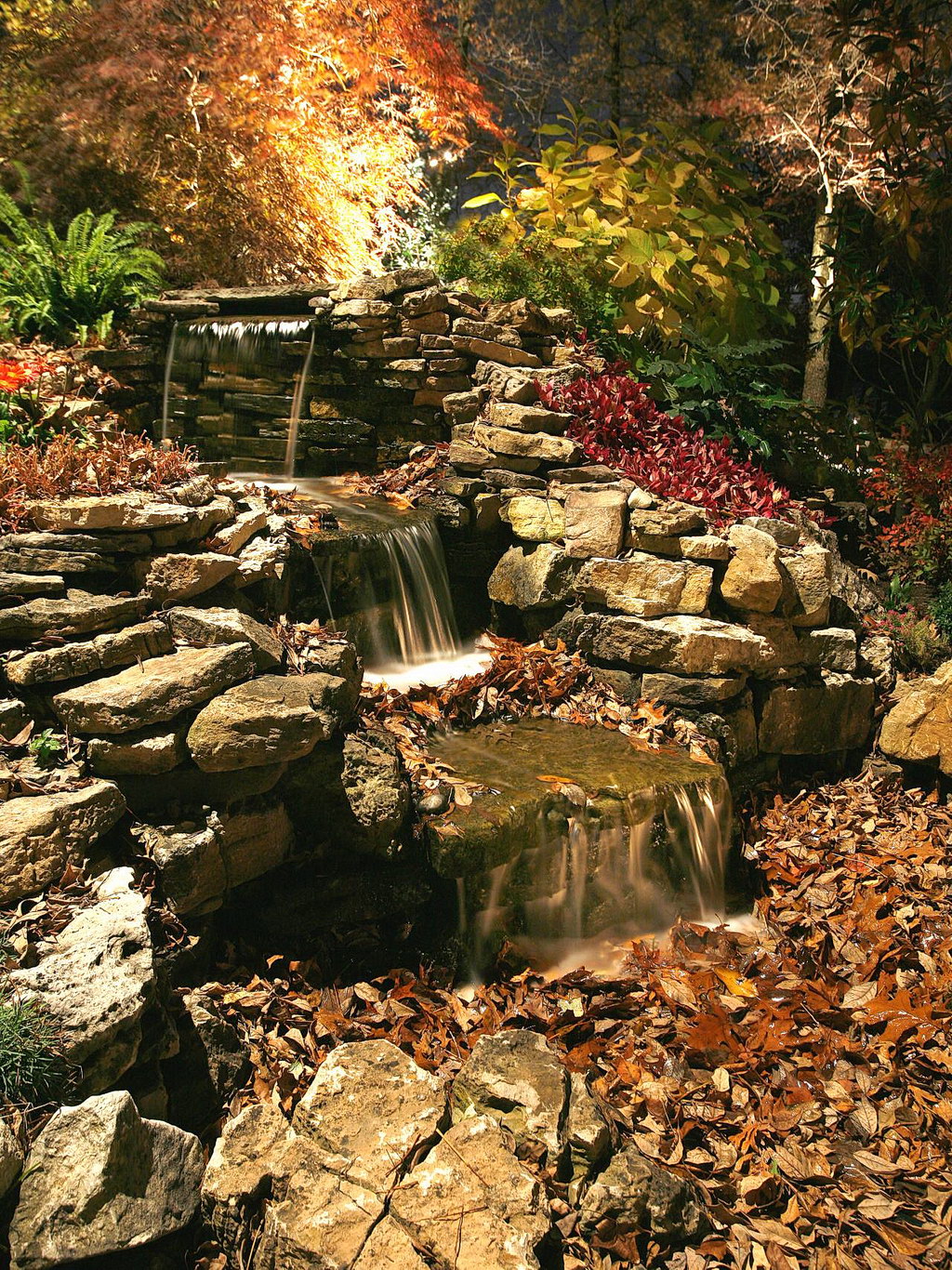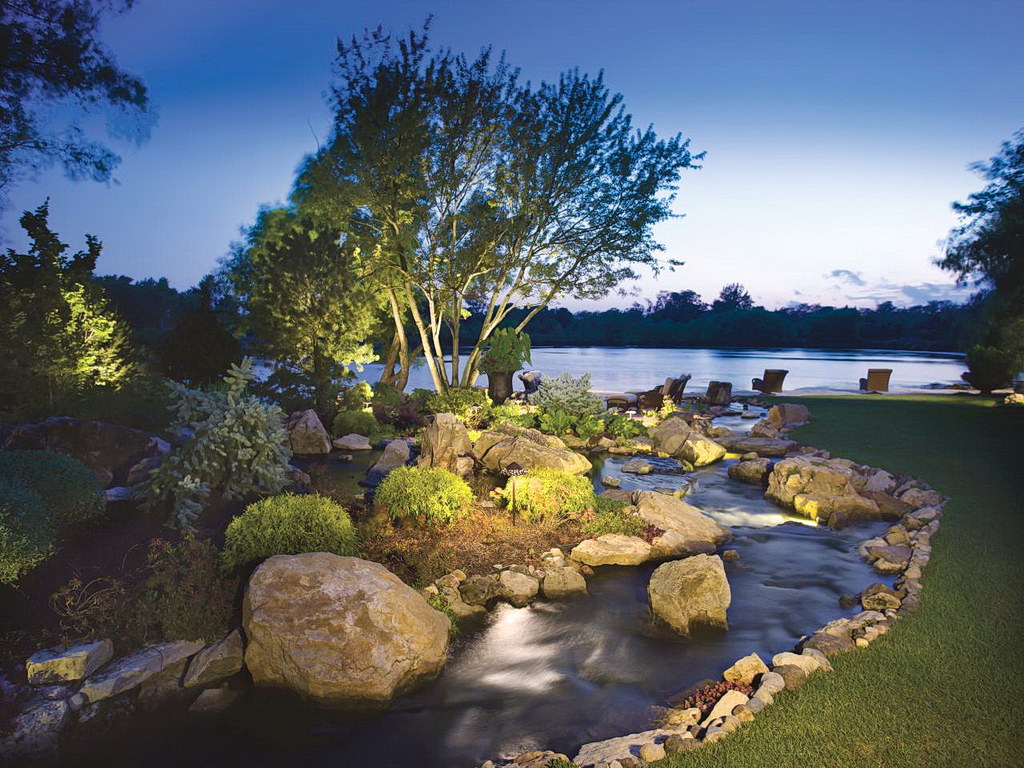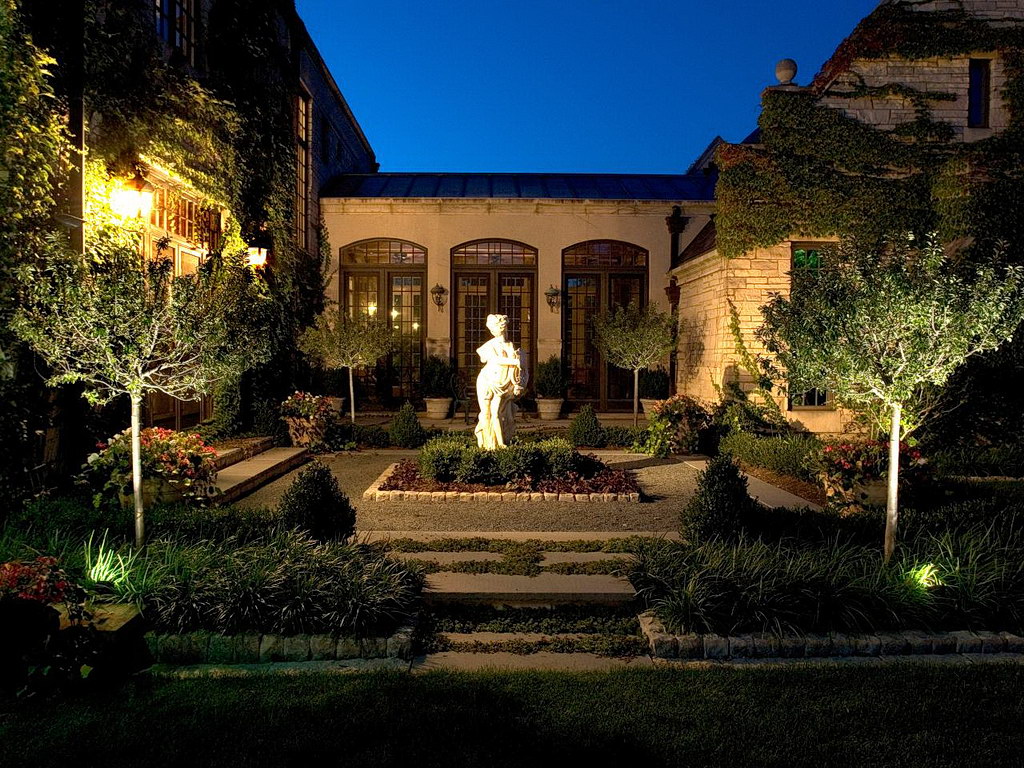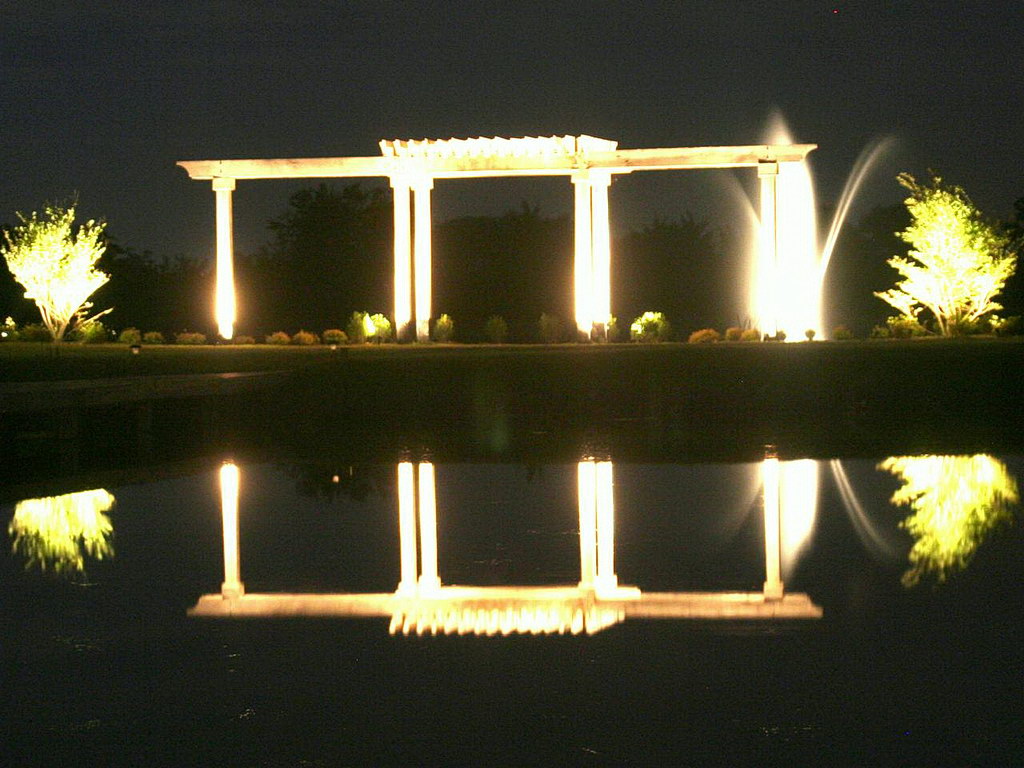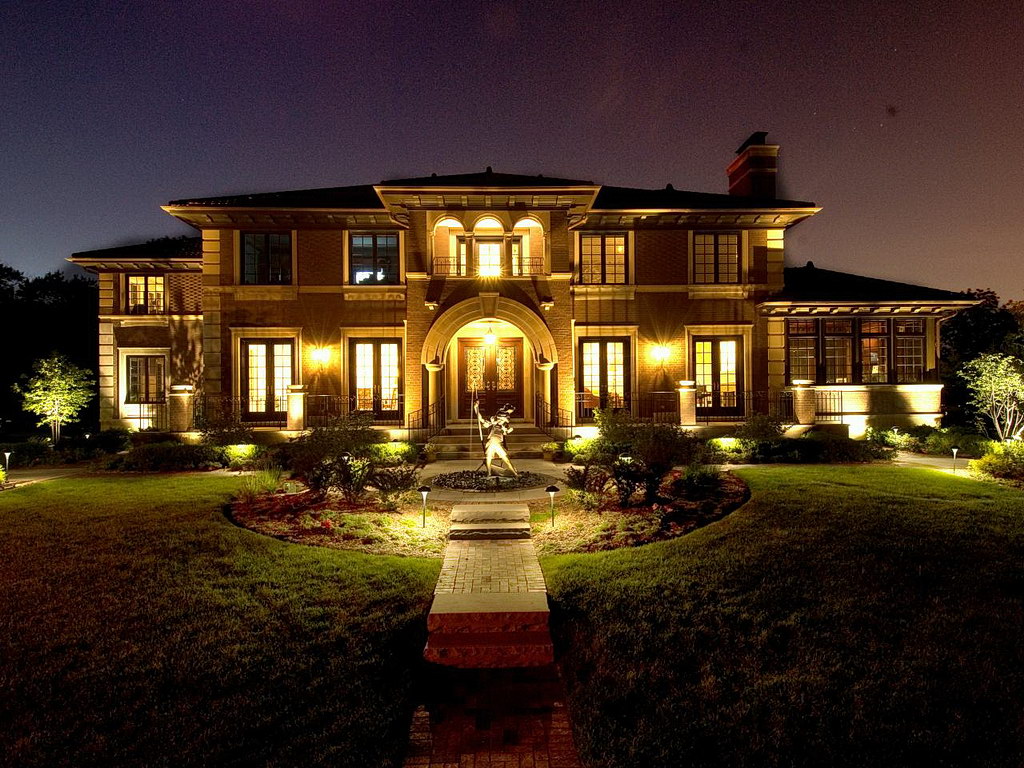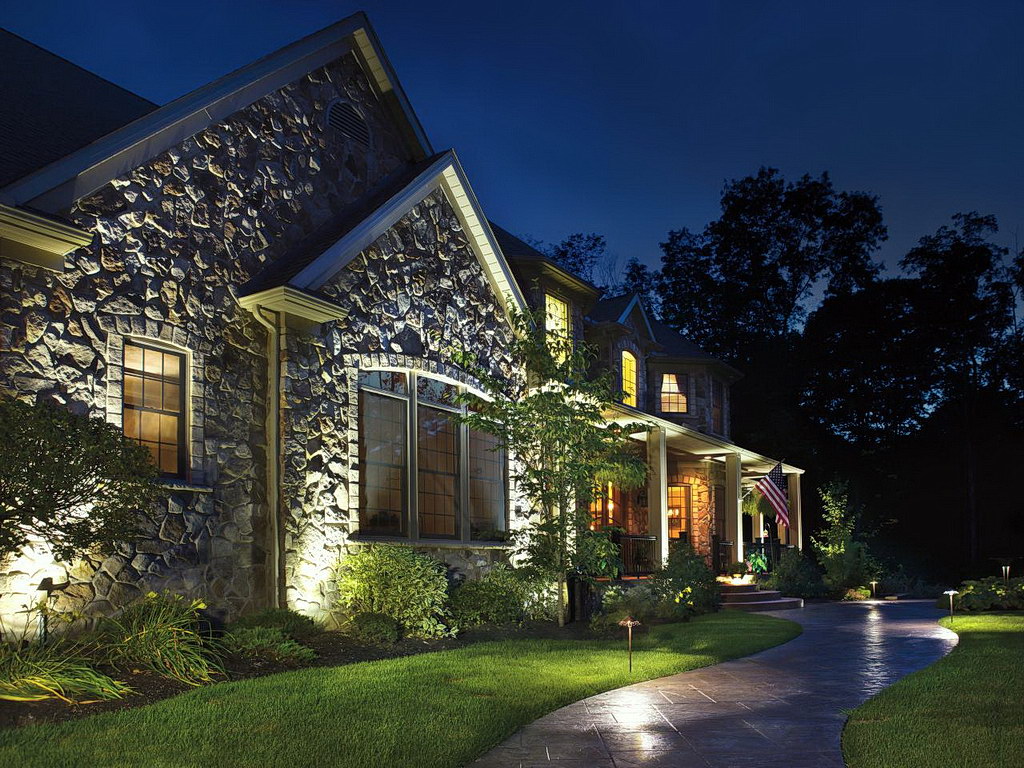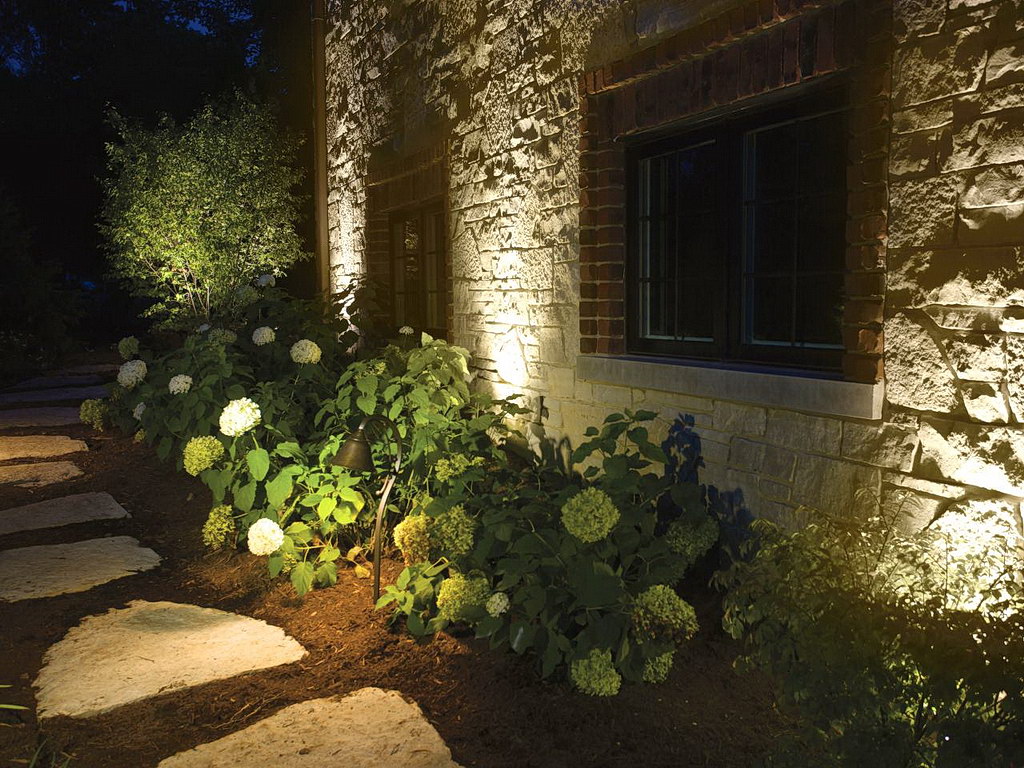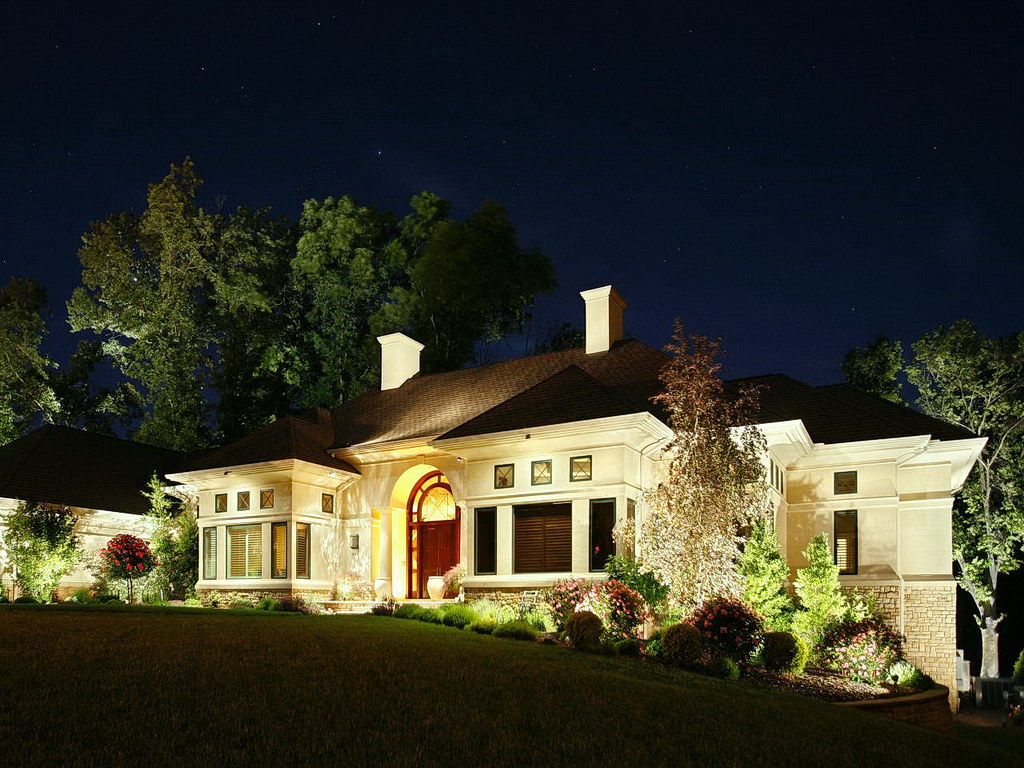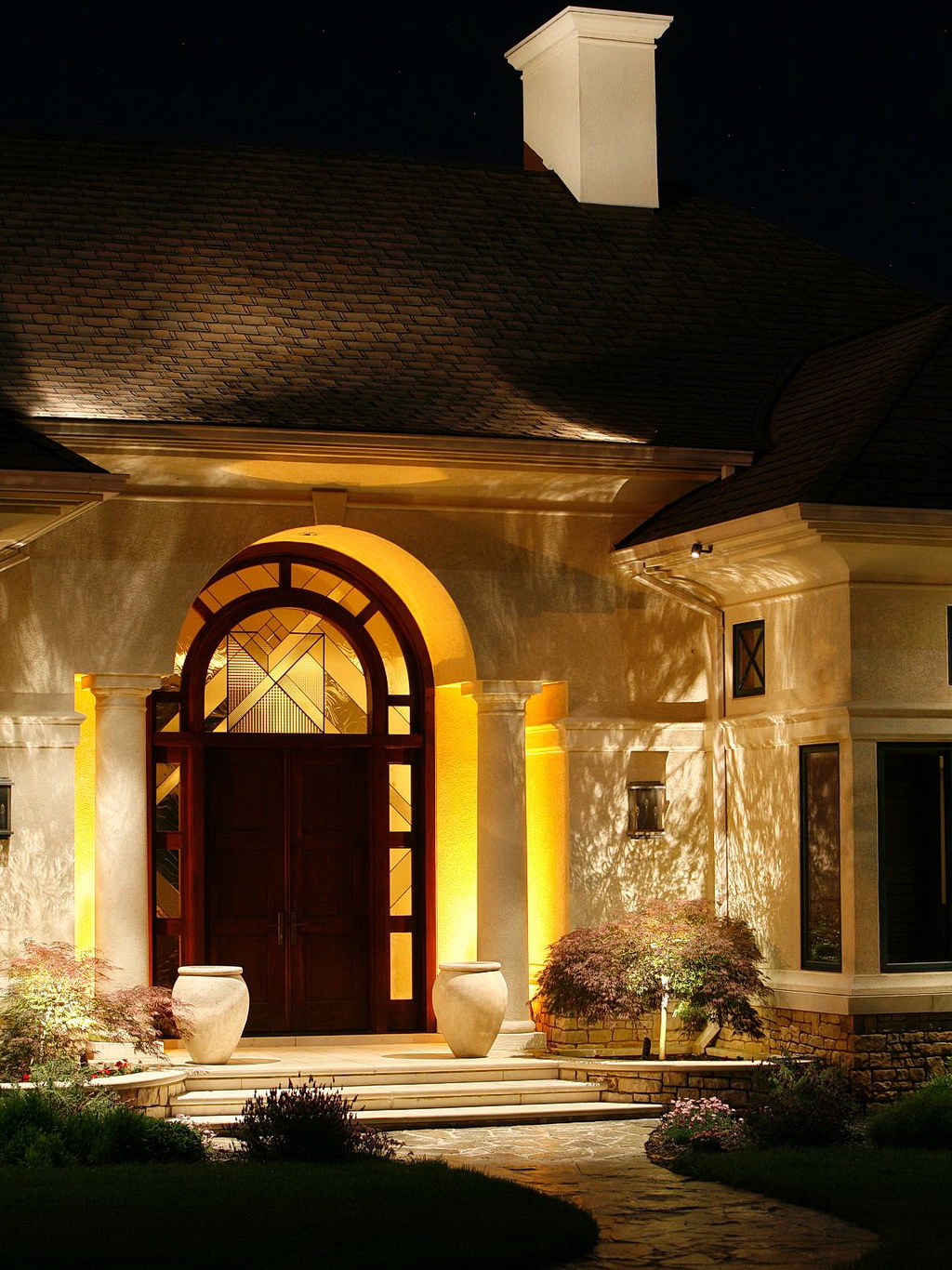Thoughtful landscape lighting ideas is a treat for the eyes. “You want people driving by to take a second look because what you’ve created is interesting,” says Chris Mitchell of landscape lighting firm NiteLiters in Owensboro, Ky.
Mark Parameters.
On this walkway, the offset lights have considerable distance between them, leading the eye naturally down the path. Some are located entirely in the garden bed while others cast light onto the path. “They give you just a little bit of information,” says Jeff Dross of Kichler Lighting in Cleveland. “You simply need an idea of parameters so you can navigate through the area. Keep in mind that there will be a fair amount of natural moonlight at night to help you as well.”
Mix Styles In Your Landscape Lighting Ideas.
Using different styles of path lights in the same scheme can help you avoid the “good little soldier” look. Be sure to clean the lamp surfaces and check for burned-out bulbs at least once a year, and relocate the stakes if plant growth has blocked their light output.
Less Is More.
Path lighting is something that is rarely done well. Whether you opt for inexpensive stakes or pricier fixtures, placement is critical. Think of them as gentle hints for where to go next, not outlining tools or runway lights for an airplane landing. Fewer is usually better.
Add Color and Texture In Your Landscape Lighting Ideas.
Path lights are visual aids in a dark space, but they also add color and texture if you place them near interesting plants. This way, you can retain pieces of your garden’s charm long after the sun sets.
Work With What You’ve Got.
Another approach to path lighting is to forego it altogether. In this scene designed by Chicago-area lighting firm Night Light, Inc., uplit trees and downlighting from the house cast ample light on the walkway. “You don’t have to light every inch of your landscape,” says vice president Dean MacMorris. “There’s a place for path lights, but we use them sparingly.”
Moon Lighting.
Night Light, Inc. specializes in moon lighting, placing lights high in trees to give the effect of real moonlight. According to MacMorris, you want to climb 30-40 feet or higher to get the most natural look and to keep the fixtures hidden from view. Here, uplighting on trees near the house and moon lighting in the taller trees beyond preserves a woodsy feel and illuminates walking areas so that no path fixtures are needed.
Cool Magic Light.
In terms of color temperature, moonlight is on the cool end of the spectrum — it’s “bluer” than artificial indoor lighting. Night Light, Inc. uses lighting with a color temperature of 5500 kelvins for a natural moonlit look. This patio at the end of the pathway is illuminated softly with just two moon lights overhead.
Indirect Lighting.
Seating areas benefit from moon lighting or lighting installed high overhead because there are no harsh bulbs at eye level and it creates a cozy, intimate feel. “No one likes to feel as if they’re on stage when they’re sitting outside,” says MacMorris.
Warm and Cool Lighting.
Candlelight is at the other end of the spectrum from moonlight — compared to the cooler 5500 kelvins, yellow has 2000 kelvins. That means in combination with overhead moon lighting, warm tabletop candles really pop.
Fireplace Lighting.
If you don’t have tall trees, you may have to get creative to achieve moon lighting. This outdoor fireplace is spotlighted from a three-and-a-half story eave. The pergola in the background is lit brightly because it’s viewed from the house most of the time; however, it can be made more inviting with a dimmer switch.
Hardscape Lighting.
The hardscaping in this outdoor kitchen is lit with outdoor LED tape, which is a flexible strand of LEDs encased in silicone and designed to keep moisture out. Although the back is adhesive, the tape requires support from clips to stay in place. You need some electrical experience if you want to install this yourself.
Water Features.
According to Mitchell of NiteLiters, many clients want water features to be lit from within and also uplit — even though that effect never occurs in nature. “But if you want KAPOW, that’s the way to go,” he says. This water feature is the focal point of the client’s front yard.
Natural Beauty.
Another approach for water features, says Mitchell of , NiteLiters, is to let the ear be your guide. “When you’re walking in the woods, you hear water first — you don’t see it,” he says. “You don’t have to make your water feature a visual focal point. You can let someone take it in as they come near it, and that can be a spectacular effect in itself.” Soft downlighting is the best choice for this natural look.
Lighting Wide Areas.
This scene is lit with the entire view in mind, not just the water feature. Uplit trees across the viewing area provide balance; the designer used more lumen intensity and a wider lamp spread on the tree in the middle, which is the focal point. A bonus tip for lighting evergreens: Using a blue lens intensifies their green color.
Lighting Objects.
When you’re uplighting objects such as statuaries or trees, a good rule of thumb is to use warm (yellow/orange) light on man-made objects and cool (white/blue) light on plants, says Night Light, Inc.’s MacMorris. It’s also best if you plan the lighting before you actually install the object itself. Statues, for example, are typically best viewed from a particular direction, but once you get hardscape and plants in place, it can be difficult to locate the light exactly where it needs to be to get the right effect.
Balanced Lighting.
This pergola stands on an island in the middle of a pond and is viewed from a distance, so rather than just lighting the structure itself, designer Dave Marciniak of Revolutionary Gardens uplit the crape myrtles on either side to spread the light across the entire feature. This way it looks balanced, not stark. “It’ll be even better as the crapes get bigger,” Marciniak says.
Add Depth to Exterior Lighting.
Balance is important when you’re lighting a home’s exterior. Lighting only the house can look unnatural — even bleak — but uplit trees and statuary add depth and softness.
Creating Shadows.
Shadow can be just as interesting as light. This is main rule for your own landscape lighting ideas. The spotlights on the front of this house were placed very close to the foundation so that the light would catch the edges of the beautiful stonework and create an intricate shadow pattern. To avoid a dead dark spot at the peak of the roof, the designer placed one spotlight on a stem in the flower bed (at left) that sends light all the way to the top.
Highlighting Hydrangeas.
This exterior is also uplit to highlight the stonework, and a path light in front spreads its beam over a bank of hydrangeas. “Hydrangeas love landscape lighting,” says Dross of Kichler Lighting. “They should be stage actors.” They reflect light dramatically when they’re in flower, but they also create dancing shadows in winter because they retain their faded leaves and blooms. It’s smart to think about what any plant looks like in all seasons when you’re deciding where to place your lights, especially if you’re using the plant to hide unattractive fixtures.
Creating a Silhouette.
The warm bath of light on this house is created with a mix of down and up lights. The chimneys and dormers are also lit, as are the large trees behind the house which prevent the “lit shoebox effect,” says Mitchell of NiteLiters. Soffits tend to trap light and make the whole house look like a white-hot square. The extra elements add visual height and softly silhouette the roofline so you get a true sense of the space.
Dramatic Doors.
To generate a sense of drama for the front door of this house, which is set in a very narrow porch, Mitchell of NiteLiters chose to backlight the pillars instead of spotlight them. “It creates depth and leads your eye past the pillars to what’s behind them,” he says. An amber lens makes the dark wood of the door look even richer.
Source: http://www.diynetwork.com/
Table of Contents
